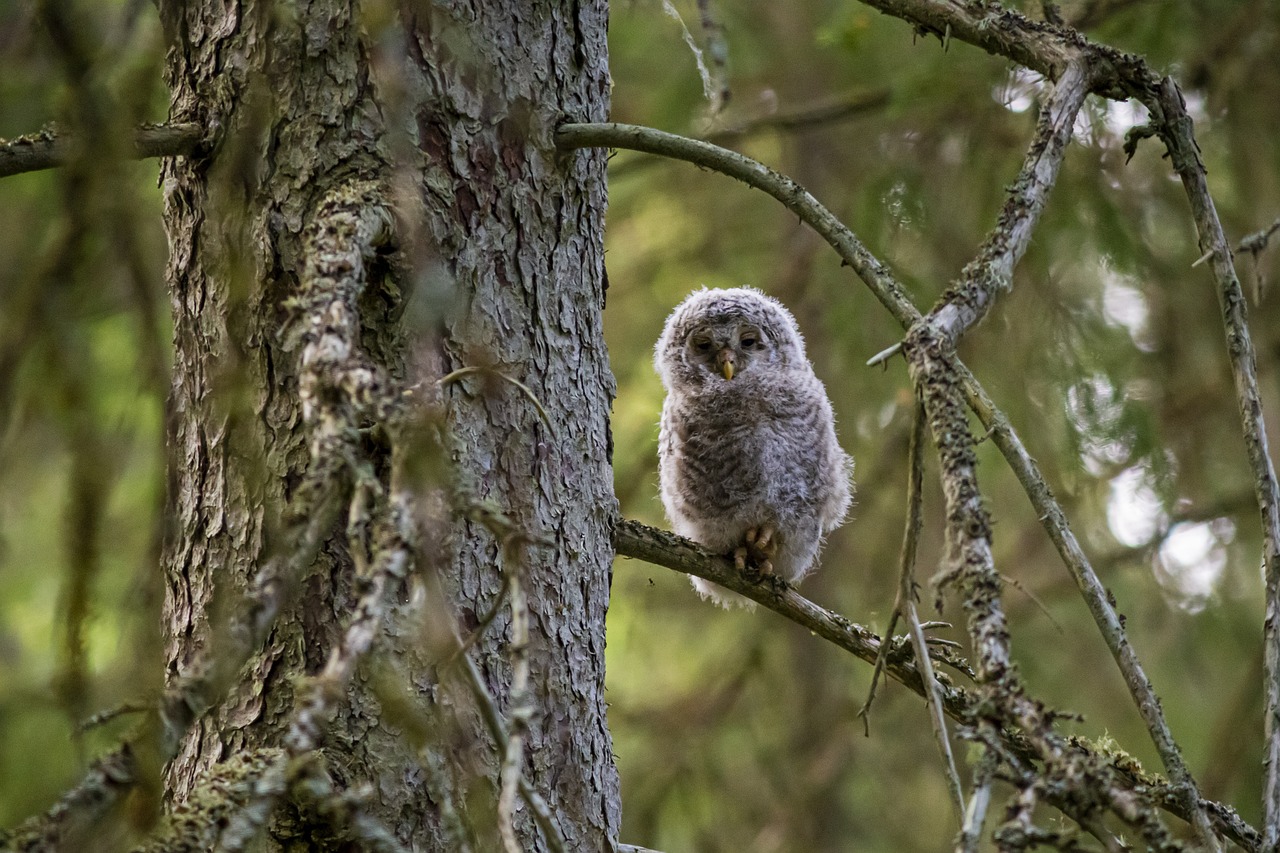Here’s a full natural history overview of the Ural Owl (Strix uralensis), a powerful forest owl of Europe and Asia:
Ural Owl (Strix uralensis)
Taxonomy & Classification
- Kingdom: Animalia
- Phylum: Chordata
- Class: Aves
- Order: Strigiformes
- Family: Strigidae (Typical owls)
- Genus: Strix
- Species: S. uralensis
- Common names: Ural Owl
General Description
- Size: 50–62 cm long; wingspan 110–134 cm.
- Weight: 500–1,300 g (females larger than males).
- Appearance:
- Large, round head with no ear tufts.
- Pale face with darker concentric rings around dark eyes.
- Long tail (relatively longer than most owls, giving a hawk-like impression).
- Plumage gray-brown to whitish with streaking, varying across subspecies.
- Distinctive features: Combination of size, pale face, and long tail distinguishes it from similar owls.
Behavior & Lifestyle
- Activity: Mostly nocturnal, but may also hunt at dawn, dusk, and even by day in winter.
- Flight: Silent, buoyant, and powerful; capable of maneuvering through dense forests.
- Territoriality: Strongly territorial, especially during breeding—adults will fiercely attack intruders, including humans, near nests.
- Vocalizations:
- Deep, resonant territorial call: a series of hoots.
- Alarm and contact calls include harsh barks and screeches.
Diet
- Primary food: Small mammals—voles, mice, shrews, and squirrels.
- Birds: Occasionally takes small to medium-sized birds.
- Other prey: Frogs, insects, and occasionally fish.
- Hunting strategy: Perches on branches or glides low to the ground, using acute vision and hearing to locate prey.
Life Cycle & Breeding
- Breeding season: March–June (earlier in southern parts of range).
- Nesting sites:
- Old tree cavities, broken tree trunks, or large stick nests built by other raptors.
- Will also use nest boxes in managed forests.
- Clutch size: 2–6 eggs (typically 3–4).
- Incubation: 27–34 days, mainly by the female.
- Fledging: Chicks leave the nest at 4–5 weeks but remain dependent on parents for several weeks.
- Parental behavior: Female broods while male provides food; both defend chicks aggressively.
Habitat
- Prefers mature mixed or coniferous forests with clearings, bogs, or meadows nearby.
- Often associated with boreal forests, montane woodlands, and riparian areas.
- Requires large, undisturbed tracts of forest for breeding.
Geographic Range
- Found across northern and eastern Europe (Scandinavia, Baltic states, Poland, Balkans) through Russia and Siberia into Japan.
- In central Europe, populations are patchier and often restricted to mountain forests (e.g., the Alps, Carpathians, and Balkans).
Ecological Role
- Predator: Helps regulate rodent populations, especially voles.
- Prey: Eggs, chicks, and sometimes adults taken by larger raptors (eagles, goshawks).
- Indicator species: Presence signals healthy, old-growth forests.
Conservation Status
- IUCN Red List: Least Concern.
- Population trends: Stable or increasing in some areas due to nest box programs.
- Threats:
- Logging of mature forests reduces nesting opportunities.
- Human disturbance during breeding can lower success.
- Conservation measures: Protection of old-growth forests, installation of nest boxes, and legal protections in many countries.
Interesting Facts
- Known as one of the most aggressive owls when defending its nest—attacks on researchers are well-documented.
- In Finland and Sweden, the Ural Owl is often used in nest box conservation programs to help sustain populations.
- Unlike many owls, it frequently hunts during daylight, especially when feeding chicks.
- Plays an important role in folk culture and symbolism across northern Europe.
Visited 897 times, 11 visit(s) today
Views: 1501
Subscribe to the newsletter:
